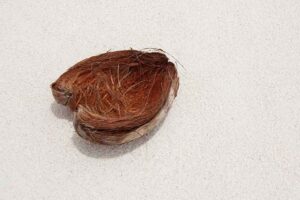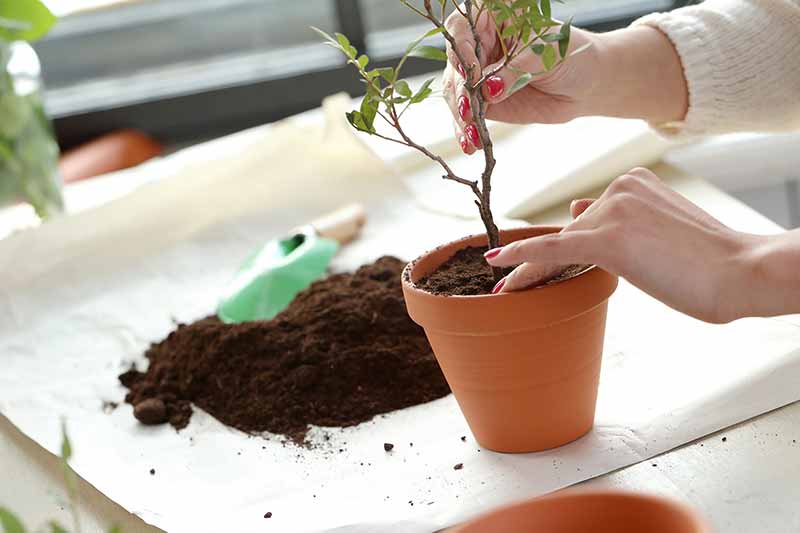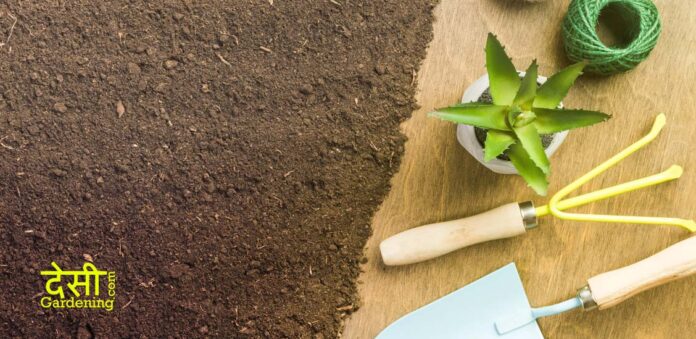Namaskar Desi Gardeners! Read the blog to know about Coco Peat for Plant. India is the one of the largest producers of coconut. Coconuts are useful in every inch. While the fruit is used for multiple purposes, we know that the coir is used to make ropes, bags, and mats in India. Another very common use of coir is to make coco peat for gardens. Now your mind has two questions What is a Coco Peat and How to Make Coco Peat? Here in this blog we have given it all.
How to Make Coco Peat for Plant?
Coco Peat for Plant is basically the grounded coconut coir, but we need to know a few more things. It has to be treated before using it.

The coconut is covered with a ‘skin’ which has hair like features. This is called the coir. Coir derives from the Malayalam word kayar which means the rope that is made from it.
As the coconut tree grows beside the seas, the coir attains a unique quality of being waterproof and resistant to sea water damage, which is very useful for making coir fibre and ropes. Coir is harvested at different stages of the ripening of coconut. The unripe fruit bears a light toned coir while ripe fruits have brown coir, and both of these are popularly used for making fibres, beddings and numerous other products. The powdery dust that remains after the processing of making coco fibre is collected and commercially sold as cocopeat.
The other way is grind the coir finely.
However, you can make your own cocopeat at home quite easily. Here is an instructional video showing the process step by step.
It is simple to make Coco Peat for Plant at home but you need to note a few things. Before grinding the coconut coir in your mixer, put away the hard parts as we see in the video. You do not have to make it a fine powder like it is available commercially.
Cocopeat is available in your local nursery and is commonly sold online. Note that when you get it from your local nursery, it may come as loose powder. They may not sell the cocopeat bricks. However, most sellers online will sell you in brick form.
When you buy a brick, it is highly compacted using a machine. So, when you put water on it, it expands many times over. Nursery cocopeat is generally washed beforehand, so its volume remains the same.
Before using Coco Peat for Plant, there is a very important step. You have to wash the salt off. As most coconut trees grow beside the sea, the coir may contain a high amount of salt. Before using the cocopeat it is always good to wash it a few times in fresh water and dry it for a day in sunlight.
If you buy Coco Peat for Plant from your local nursery, do ask them if it is ‘washed’ or not. Usually they sell so but most cocopeat bricks are not washed which means you have to do it yourself.
If you want to see how a commercial maker works it out, watch this video by master gardener Professor Suraj Prakash Agarwal.
How to use Coco Peat for Plant?
It is popularly used in potting soil. With the help of cocopeat we can make our soil better in many ways. It breaks down in time and releases nutrients for the plant. Cocopeat also helps in retaining moisture without water logging.
Sometimes gardeners use soilless potting mix using only cocopeat. Know more about different kinds of soil mix here.
It makes the soil lighter which is very useful for gardening in terrace and balconies. It keeps bigger pots lighter.
Ideally and speaking generally we use a third of cocopeat for the soil. It can differ with plants like succulents.
This potting material has a lot of other benefits which makes it such a popular choice among gardeners, not only in India but around the world.
Dos and Don’ts
Cocopeat has more benefits than drawbacks but we should know how to use it correctly. Like in my case I made a few mistakes and learnt from it. So let me give you a general guide on how to use it.

- Use ‘washed’ Coco Peat for Plant to get rid of soil. If you get that from your nursery, very well. Otherwise wash cocopeat in fresh water a few times and dry it under the sun. When I started using, I just melted a cocopeat brick and added it to the potting soil. It may not kill your plants but it puts it under stress. If the plant is stressed, it will have a longer time growing and flowering. Unfortunately, if your plant is already weak, you may make it weaker. I lost one of my plants that way. It had a little root rot, so I got rid of the old soil and put it only in (unwashed) cocopeat. Sadly, it did not survive.
- It holds on to moisture, this means you have to water less otherwise your plants can rot.
- If you use a lot of Coco Peat for Plant in your potting mixture or use only that – keep an eye in summer and rainy seasons of Indian climate. In my experience in Kolkata, cocopeat also dries up quickly. So, it is safer to use one-third of it along with soil.
- During the rainy season, I lost some of chrysanthemums cuttings and saplings which I had put in cocopeat. Cocopeat is great for growing cuttings as it helps to grow roots but it may not go well for all during the rains. The continuous monsoon kept the soil wet – more wet- than normal garden soil. The cuttings became more prone to fungus (although I used anti-fungal medicines). The rest of those cuttings which were in soil survived it.
- Okay, I learnt this one from experience. I put an oleander plant in soilless potting mix (cocopeat, compost, gravel, sand etc). When the plant grew to a few feet in height it was difficult to keep it standing and it would drop to its side whenever a little wind blew. So first, cocopeat and grow bags make it very light. Use clay pots or any kind of pot that has some weight. Second, do not put plants that will grow tall. Later I added garden soil to it from the top only and it gave some stability to it.
- Repotting is easier. Soil gets stuck to the sides of the pot which does not happen with cocopeat. The whole plant comes out easily and it is quite light to handle.
- It is great for germinating seeds.
- Cocopeat can be used instead of peat moss which is a very eco-friendly option.
What I have learned from using Coco Peat for Plant is that it is extremely beneficial but unless necessary, do not use it as a substitute for soil. Use it with soil and compost. It is the most popular potting mix and the primary step in a happy garden is good potting soil which you can get by mixing soil, cocopeat and compost.
When you buy a brick, it is highly compacted using a machine. So, when you put water on it, it expands many times over. Nursery cocopeat is generally washed beforehand, so its volume remains the same.
View this post on Instagram
| You May Also Be Interested in Other Topics- | |
| 1. | Meaning of Organic Farming |
| 2. | Red Hibiscus Plants |
| 3. | Yellow Flowers Plants |





























